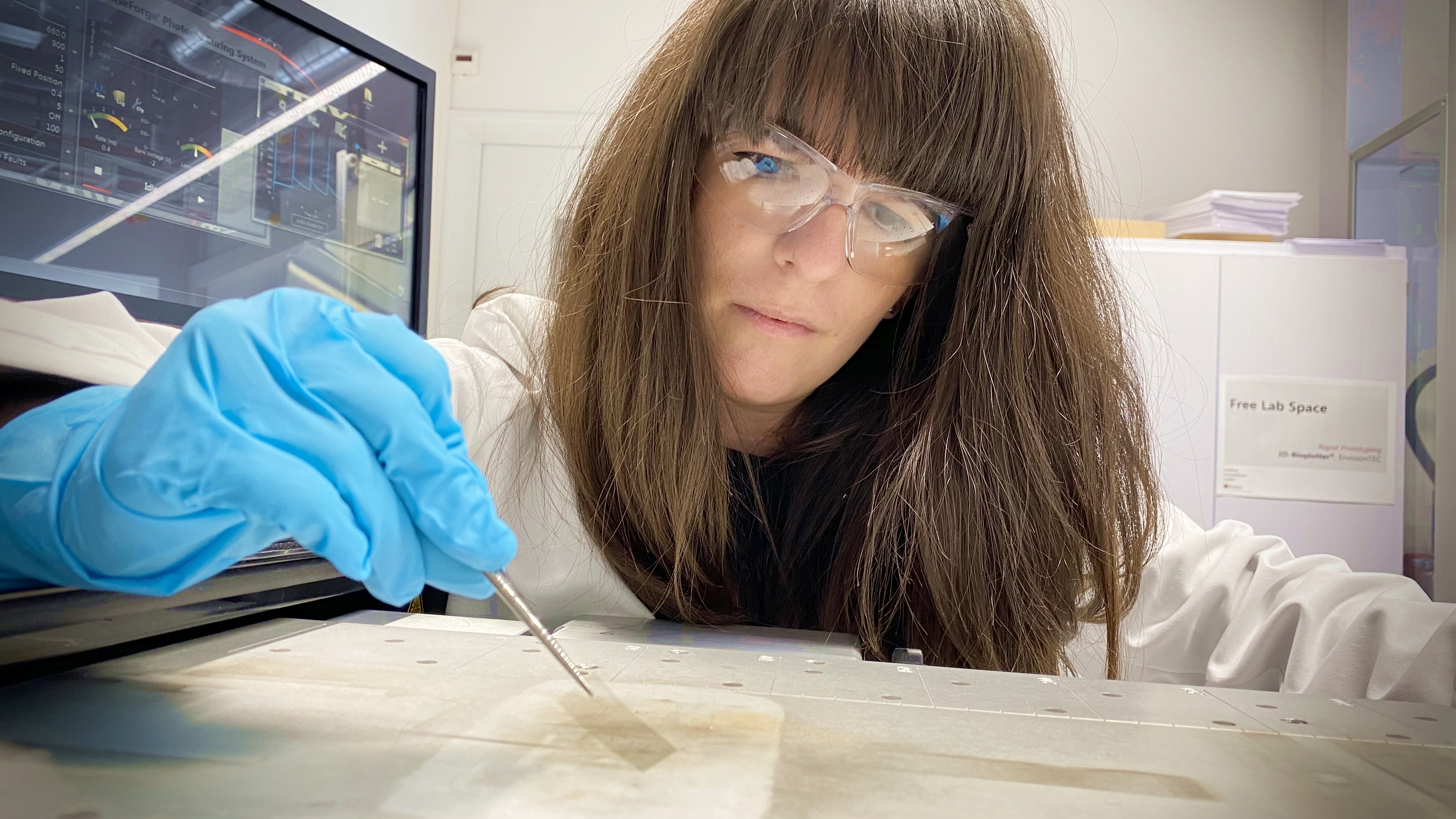Conductive secret ink
A research team at Empa’s “Thin Films and Photovoltaics” lab in Dübendorf, where Evgeniia Gilshtein works, has previously succeeded in printing electronic circuits and sensors on polymer films. Together with researchers from the Paul Scherrer Institute (PSI) and EPFL, they applied thin-film transistors to paper and PET films within the FOXIP research project (short for “Functional OXIdes Printed on Polymers and Paper”).
To do this, the team uses transparent conductive metal oxides (TCO). The conductive ink can be applied onto a surface using an inkjet printer, for example. “Of course, we don’t use ordinary office printers for this, but the highly specialized equipment at Empa’s Coating Competence Center,” says Ghilshtein. After all, the precision with which the electronics are printed is in the micrometer range.
An elegant detour
Now the transparent security film is being used to advance one of many potential future applications of the technology. “What was most important to us was that the film’s additive manufacturing process could also be used on an industrial scale,” Gilshtein says. The invisible door lock could be used in banks or hospitals, for example, but also for private homes.
To make the metal-containing nanoparticle ink more transparent and conductive than conventional products, the researchers used an elegant detour in the production process: After the circuits were printed on the carrier foil, the foil was dyed blue. Since the blue ink, unlike a transparent film, can absorb light, this now enables the ink to be “burned” onto the substrate, using high-energy light irradiation. In the process, not only does the blue color disappear, but the “secret ink” made of indium tin oxide becomes invisible in the same step. “The result is printed circuits that have significantly higher conductivity than previous solutions,” says the Empa researcher.
The sensor surfaces cannot be seen by the human eye and can be positioned in suitable locations, such as above a door hinge. Says Gilshtein, “But the circuits can just as easily be positioned on a pane of glass or a curved door handle.” The film is also coupled with a display that shows whether the code was entered correctly. Thanks to the comparatively simple printing process, the number of sensors can be increased almost at will.
The project was funded by the Swiss National Science Foundation (SNSF) (project number IZ-LCZ2_170276 / 1).
———————————————————-
A competence center for coatings
Closing the gap between laboratory research and industrial production for coatings – that is the goal of Empa’s Coating Competence Center (CCC). Research is conducted not only on printed electronics, but also on materials, processes and technologies for coatings in general, as well as on additive manufacturing (AM) methods, in which components are built up layer by layer. The CCC is structured as a private-public partnership (PPP). The idea is that all partners along the entire value chain, from academia to industry, work together to develop new technologies and find creative solutions. The center is open for collaborations for partners from industry and research.




